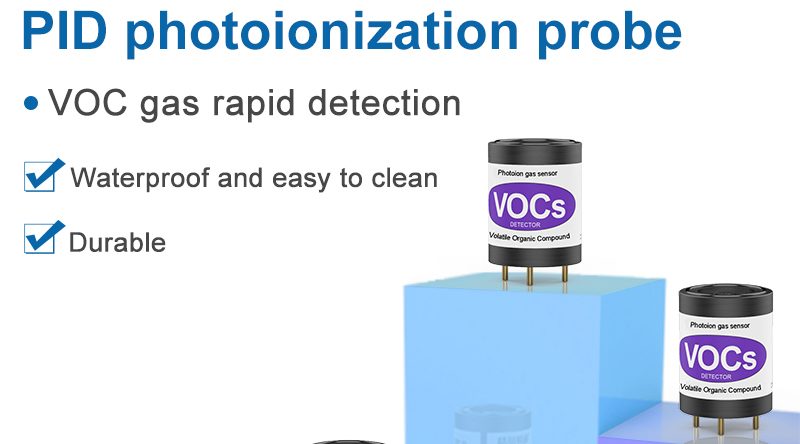Photoionization detectors (PID) are widely used in various industries for the detection of volatile organic compounds (VOCs) and other gases with low ionization potentials. These sensors utilize ultraviolet (UV) light to ionize gas molecules, generating a measurable electrical current. Choosing the right PID sensor is crucial to ensure accurate and reliable gas detection in diverse applications, including environmental monitoring, industrial safety, and hazardous waste management. In this essay, we will explore the key factors to consider when selecting a PID sensor, including sensitivity, selectivity, measurement range, response time, environmental conditions, calibration, maintenance, and cost. By understanding these factors, users can make informed decisions to choose a PID sensor that best meets their specific requirements.
Select the elements of a good PID sensor
Sensitivity and Selectivity
One of the most critical factors to consider when choosing a PID sensor is its sensitivity and selectivity. Sensitivity refers to the sensor’s ability to detect and measure low concentrations of target gases accurately. It is essential to select a PID sensor with high sensitivity, especially when monitoring for hazardous VOCs in industrial or environmental settings. Additionally, selectivity is equally important, as it determines the sensor’s ability to distinguish the target gas from other compounds present in the environment. A highly selective PID sensor minimizes false alarms and provides reliable measurements in complex gas mixtures.

Measurement Range
The measurement range of a PID sensors is another crucial consideration. Different applications may require PID sensors capable of detecting a wide range of gas concentrations. For instance, in industrial settings, the sensor may need to measure both low and high concentrations of VOCs to ensure worker safety and compliance with regulatory standards. Therefore, it is essential to choose a PID sensor with a measurement range that aligns with the specific concentration levels of the target gases in the intended application.
Response Time
The response time of a PID sensor is a key factor, particularly in applications where rapid detection of gas leaks or fluctuations is critical. A fast response time enables the sensor to quickly detect changes in gas concentration, allowing for timely intervention to prevent potential safety hazards. When selecting a PID sensor, it is important to consider the required response time based on the application’s operational needs and the potential consequences of delayed gas detection.

Environmental Conditions
Environmental conditions play a significant role in the performance and reliability of PID sensors. Factors such as temperature, humidity, and exposure to contaminants or corrosive substances can impact sensor accuracy and lifespan. Therefore, it is essential to choose a PID sensor that is designed to operate effectively in the specific environmental conditions of the application. For example, in outdoor environmental monitoring, a PID sensor with robust construction and resistance to harsh weather conditions may be necessary to ensure long-term reliability.
Calibration and Maintenance
Calibration and maintenance requirements are important considerations when choosing a PID sensor. Regular calibration is essential to maintain the sensor’s accuracy and reliability over time. Therefore, it is important to assess the calibration process, including the availability of calibration gases, the frequency of calibration, and the ease of calibration procedures. Additionally, understanding the maintenance requirements, sensor lifespan, and availability of spare parts or support services is crucial to ensure the long-term performance of the PID sensor.
Cost and Long-Term Reliability
While cost is a significant factor in the selection process, it is important to consider the overall value of the PID sensor in relation to its performance and long-term reliability. A higher initial investment in a quality PID sensor with robust features and reliable performance may result in cost savings over time, as it reduces the need for frequent replacements or repairs. Therefore, it is essential to evaluate the long-term reliability and durability of the sensor in addition to its upfront cost.
Conclusion
Choosing the right PID sensor involves careful consideration of multiple factors to ensure optimal gas detection performance in diverse applications. By evaluating the sensitivity, selectivity, measurement range, response time, environmental suitability, calibration, maintenance requirements, and cost, users can make informed decisions when selecting a PID sensor. Ultimately, a well-chosen PID sensor provides accurate and reliable gas detection, contributing to safety, environmental protection, and regulatory compliance across various industries.